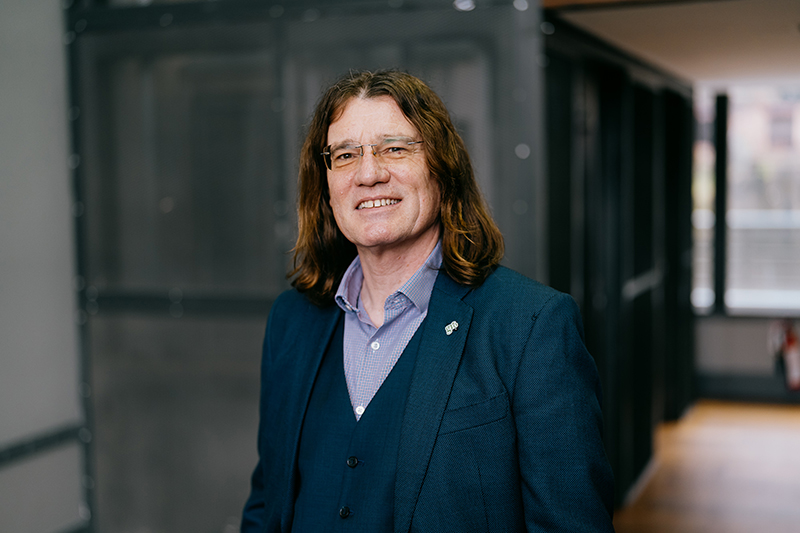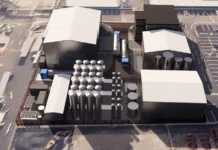
By Mark Harris, head of sustainability – roofing at Sika
URBAN heat islands represent a growing challenge in the modern urban environment, characterised by significantly higher temperatures than surrounding rural areas. This environmental change results from the increased concentrations of buildings, transportation networks and human activities that generate and retain heat.
The consequences are multifaceted, and can range from increased energy consumption to heightened environmental strain. Sika’s roofing division is at the forefront of addressing these challenges through innovative roofing solutions that reflect solar energy, reduce indoor temperatures and minimise a building’s reliance on air conditioning.
Understanding urban heat islands
The urban heat island effect is driven by the absorption and retention of heat by materials that are witnessed more in highly-built up areas such as asphalt, concrete and stone, all of which replace natural landscapes. These materials have higher thermal mass and lower albedo, meaning they absorb more heat and release it slowly. Additionally, human activities, such as transportation and industrial processes, emit heat and pollutants that further elevate temperatures. Consequently, cities experience higher temperatures, especially during summer months, leading to increased energy consumption for cooling, elevated emissions of greenhouse gases and deteriorated air quality.
The solution for mitigating the urban heat island effect
Reflective roofing materials, such as those developed by Sika, can play a pivotal role in mitigating the urban heat island effect. These roofing solutions incorporate advanced membrane technologies designed to reflect a significant portion of solar radiation, rather than absorbing it. This reflective capability reduces the heat transferred into the building, thereby lowering indoor temperatures.
Sika’s cool roofs are just one example of how the heat island effect in cities can be reduced. Also called high-albedo roof or white roof, a cool roof can reflect over 65% of the sun’s rays, compared to conventional roofs which repel less than 15%.

Another solution is green roofs, a roof that has a layer of vegetation planted over a waterproofing system that changes heat retaining hard surfaces into areas of cooling vegetation. Green roofs can effectively help to cool the air around a building as the thermal mass of a green roof helps reduce the need for air conditioning within the building. In fact, the House of Commons Environment Audit Committee report has recently recommended the installation of green roofs as a solution to mitigating the urban heat island effect.
Energy savings and environmental benefits
By lowering the temperature of roof surfaces, Sika’s cool roof and green roof systems can significantly decrease the cooling load on buildings. This reduction in cooling demand translates into substantial energy savings for building owners.
Air conditioning systems, which are major consumers of electricity, can operate less frequently and at lower capacities, leading to reduced energy bills and prolonged equipment lifespan.
Moreover, the energy savings have broader environmental implications. Lower energy consumption means reduced greenhouse gas emissions from power plants, contributing to the global fight against climate change. This aligns with worldwide sustainability goals and supports cities’ efforts to create more resilient and eco-friendly urban landscapes.
The cooler indoor environments provided by Sika’s cool roof and green roof systems can also improve occupant comfort. Reduced indoor temperatures enhance living and working conditions, particularly during heatwaves, which are becoming more frequent and severe due to climate change. Comfortable indoor environments can improve productivity, reduce health risks associated with heat stress and contribute to overall quality of life.
Supporting sustainable urban development
Adopting Sika’s cool roof and green roof systems is a proactive step towards sustainable urban development. By choosing energy-efficient and environmentally friendly materials, building owners play a crucial role in shaping a more sustainable future. These decisions contribute to the broader efforts of cities to reduce their carbon footprint, enhance resilience to climate impacts and foster healthier living conditions for residents.
Sika’s commitment to innovation and sustainability extends beyond individual projects. The company actively engages in research and development to continuously improve the performance of its products. By staying at the cutting edge of roofing technology, Sika ensures that its solutions meet the evolving needs of urban environments and contribute to long-term sustainability goals.
Urban heat islands pose a significant challenge to cities worldwide, driving up temperatures and energy consumption. Sika offers a viable solution through its reflective range of cool roof systems and its nature-based green roof systems. By choosing Sika’s roofing solutions, building owners can make a positive impact on their energy bills, contribute to sustainable urban development and create cooler, more resilient urban environments.












